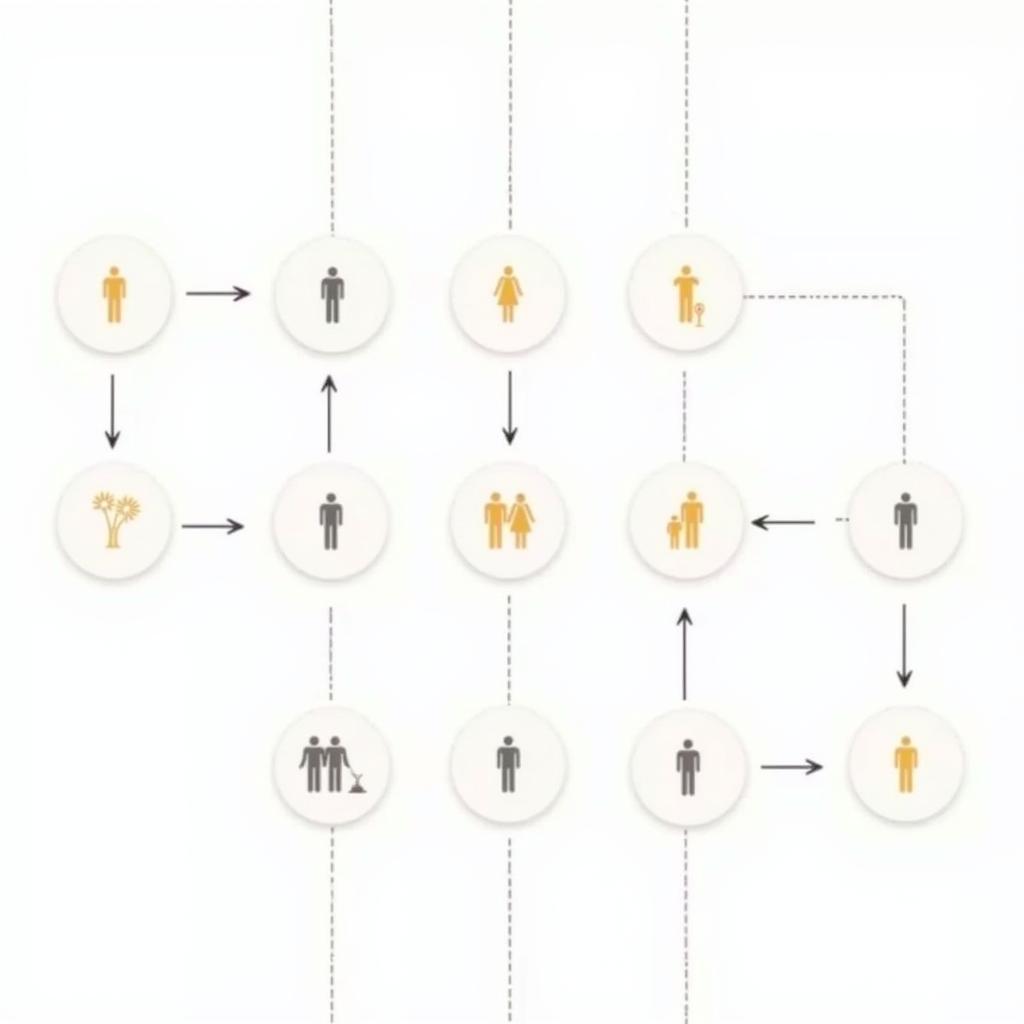Qualitative research delves into complex social phenomena, aiming to uncover rich, contextual understanding. While the goal isn’t always to generalize findings like in quantitative research, the concept of “transferability” plays a crucial role. But what exactly does it mean?
Understanding Transferability
Transferability in qualitative research refers to the extent to which the findings, interpretations, and insights from one study can be applied to other settings, contexts, or populations. Unlike “generalizability,” which seeks broad applicability, transferability acknowledges the unique characteristics of each research setting while recognizing potential resonance elsewhere.
Imagine conducting an ethnographic study on the rituals of a remote tribe. While the specific practices might not directly translate to an urban environment, the underlying themes of community, tradition, and belief could resonate with researchers studying similar social dynamics in different cultural contexts.
Factors Influencing Transferability
Several factors influence the transferability of qualitative research findings:
- Rich, Thick Description: Providing detailed accounts of the research context, participants, and methodologies allows readers to assess the potential relevance to their own situations. This includes clearly outlining the study’s limitations and scope.
- Theoretical Sampling: Selecting participants or cases that offer diverse perspectives and experiences strengthens the potential for transferability. This contrasts with random sampling, typically used in quantitative research.
- Reflexivity: Researchers acknowledging their own biases and perspectives within the research process enhances the trustworthiness and potential transferability of findings.
 Transferability in Qualitative Research
Transferability in Qualitative Research
Strategies for Enhancing Transferability
Researchers employ various strategies to enhance the transferability of their qualitative work:
- Providing Contextual Information: Thoroughly describing the study’s setting, participants’ demographics, and relevant social factors enables readers to judge the applicability to other situations.
- Using Multiple Data Sources: Triangulating data through interviews, observations, and document analysis strengthens the validity and potential transferability of findings.
- Seeking Negative Cases: Actively searching for cases that contradict emerging patterns helps refine interpretations and identify potential limitations to transferability.
Why is Transferability Important?
Transferability is crucial because it allows qualitative research to:
- Inform Practice: Findings can offer valuable insights and potential solutions for practitioners working in similar fields or facing comparable challenges.
- Generate New Theories: Examining patterns across different contexts can lead to the development of broader theoretical frameworks that enhance our understanding of social phenomena.
- Stimulate Further Research: Transferable findings can inspire new research questions and investigations in different settings, contributing to a cumulative body of knowledge.
Transferability vs. Generalizability
It’s important to reiterate that transferability is distinct from generalizability. While generalizability aims to establish universal truths, transferability acknowledges the situated nature of knowledge. It’s up to the reader, equipped with a critical understanding of both the original research context and their own, to determine the potential relevance and applicability of the findings.
Conclusion
Transferability is a cornerstone of impactful qualitative research. By embracing rich description, thoughtful sampling, and critical reflexivity, researchers can enhance the potential for their findings to resonate with audiences beyond the immediate study setting. While not seeking universal truths, transferable qualitative research offers invaluable insights that can inform practice, generate theory, and inspire further exploration into the complexities of the human experience.
FAQs
1. Is transferability only relevant for certain types of qualitative research?
Transferability is relevant to all types of qualitative research, although the specific strategies for enhancing it might vary depending on the methodology used.
2. Who is responsible for determining the transferability of research findings?
Ultimately, it is the reader who must critically evaluate the research and determine its potential applicability to their own context.
3. Can quantitative research also be transferable?
While generalizability is a more common goal in quantitative research, findings can still be transferable to other settings if the contexts are sufficiently similar.
4. How can I increase the transferability of my own qualitative research?
Focus on providing rich descriptions, using diverse data sources, and being transparent about your own biases and assumptions.
5. What are some common misconceptions about transferability?
A common misconception is that transferability implies universal applicability, which is not the case. Transferability acknowledges the situated nature of knowledge and encourages readers to critically assess its relevance to their own contexts.
Interested in learning more about qualitative research transferability? Explore our other articles on qualitative research and evaluation methods and the Maxwell qualitative research design for a deeper dive into the fascinating world of qualitative inquiry.
For personalized assistance with your research endeavors, don’t hesitate to contact us:
Phone: 0904826292
Email: research@gmail.com
Visit us at:
No. 31, Alley 142/7, P. Phú Viên, Bồ Đề, Long Biên, Hà Nội, Việt Nam
Our dedicated team is available 24/7 to provide support and guidance.